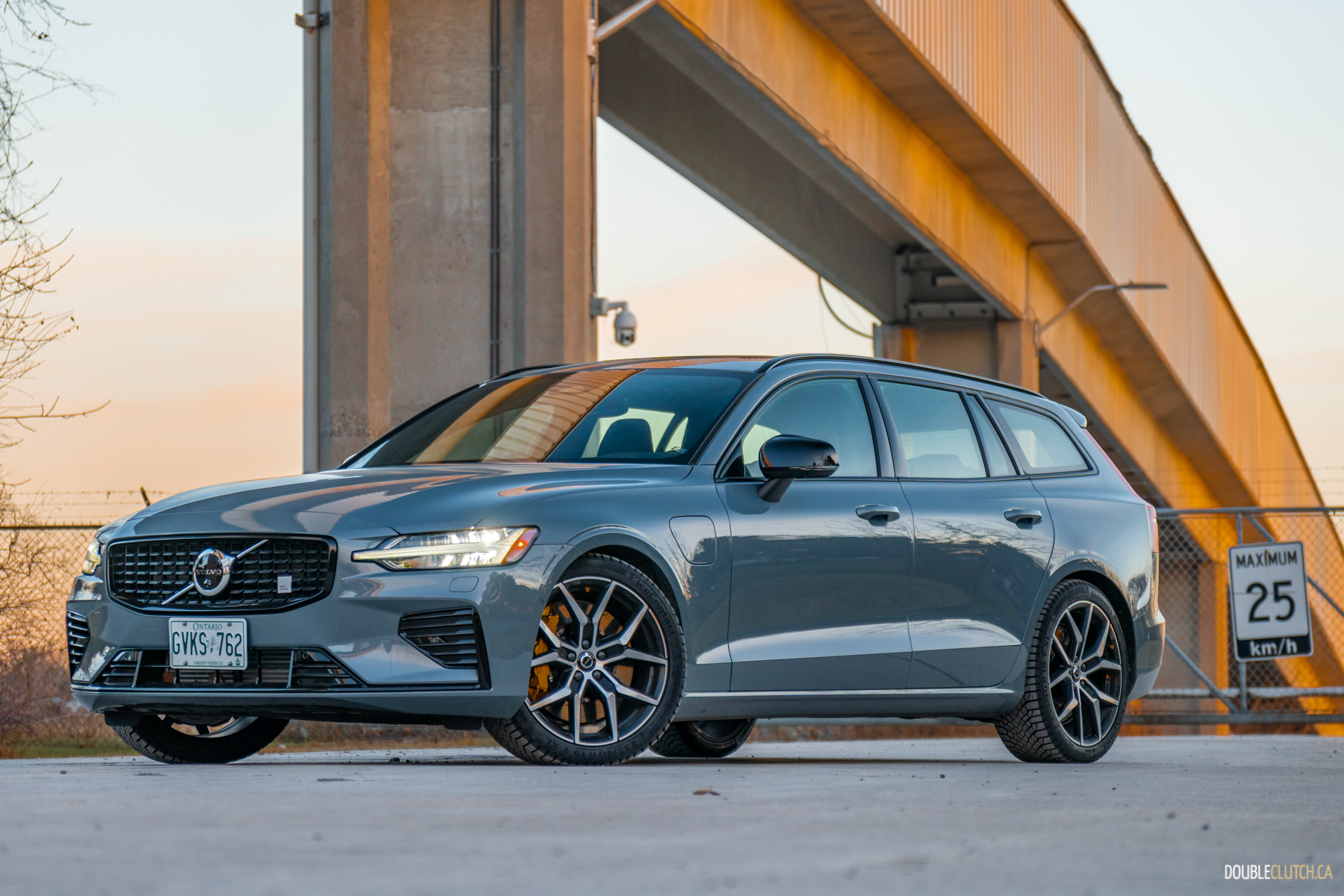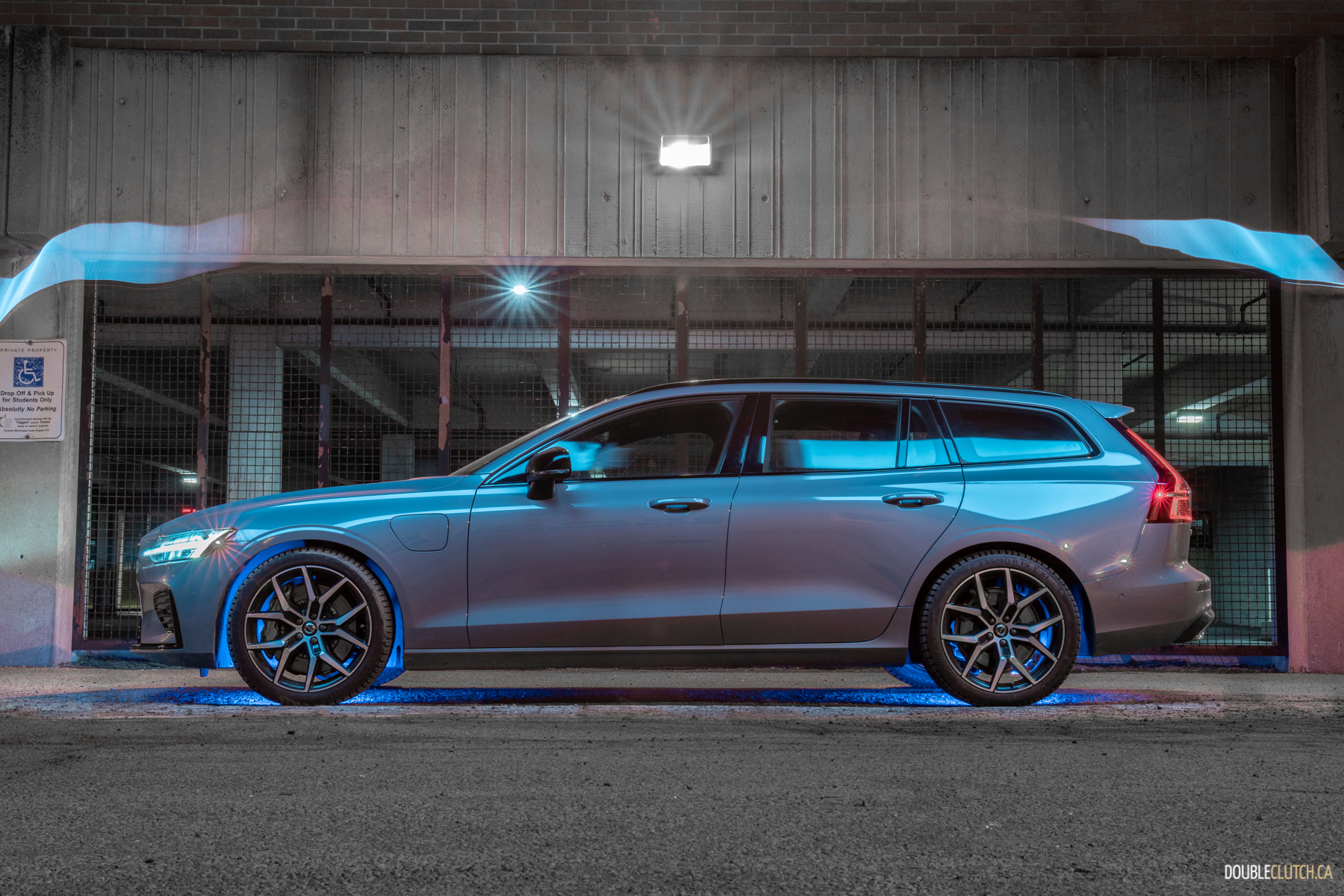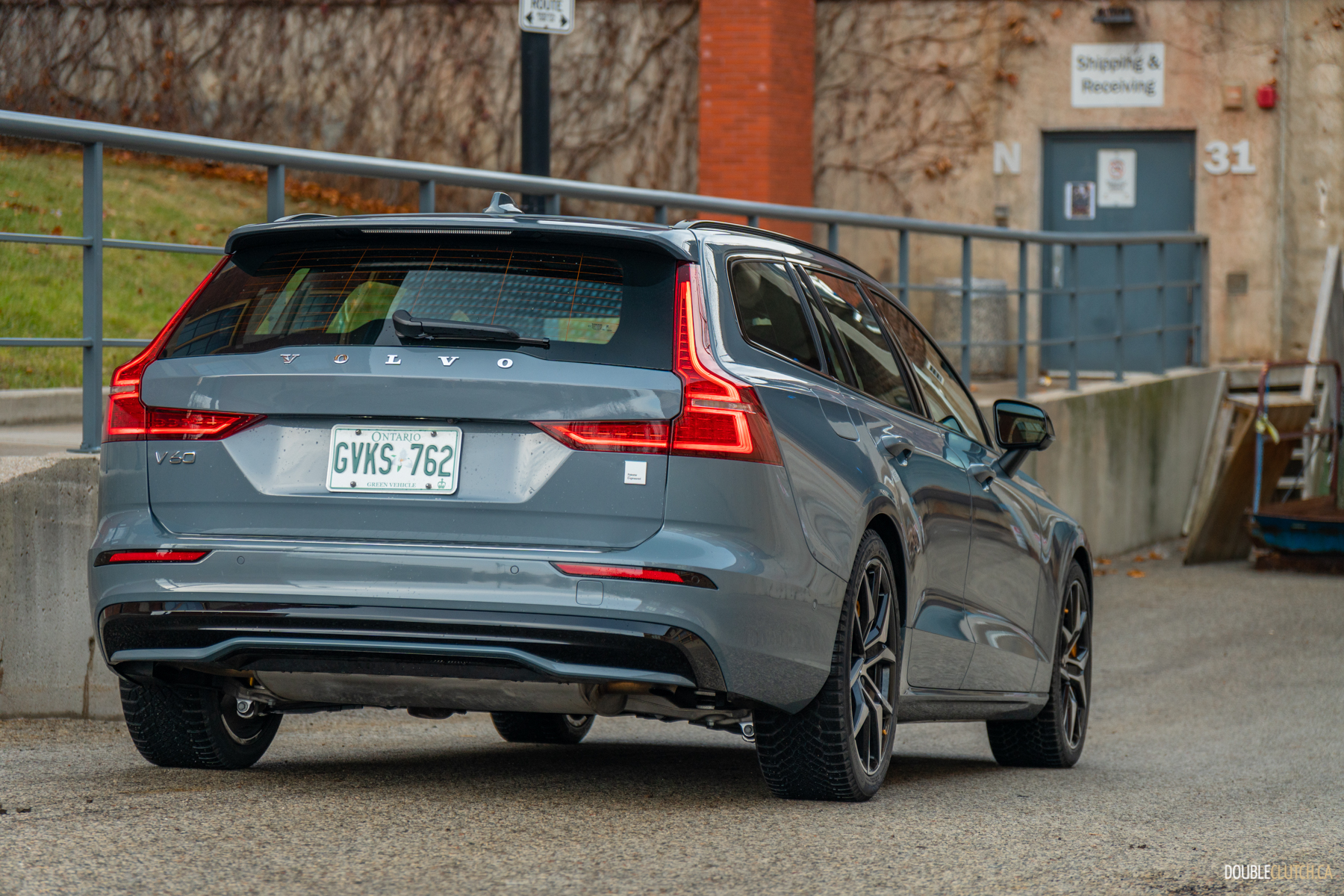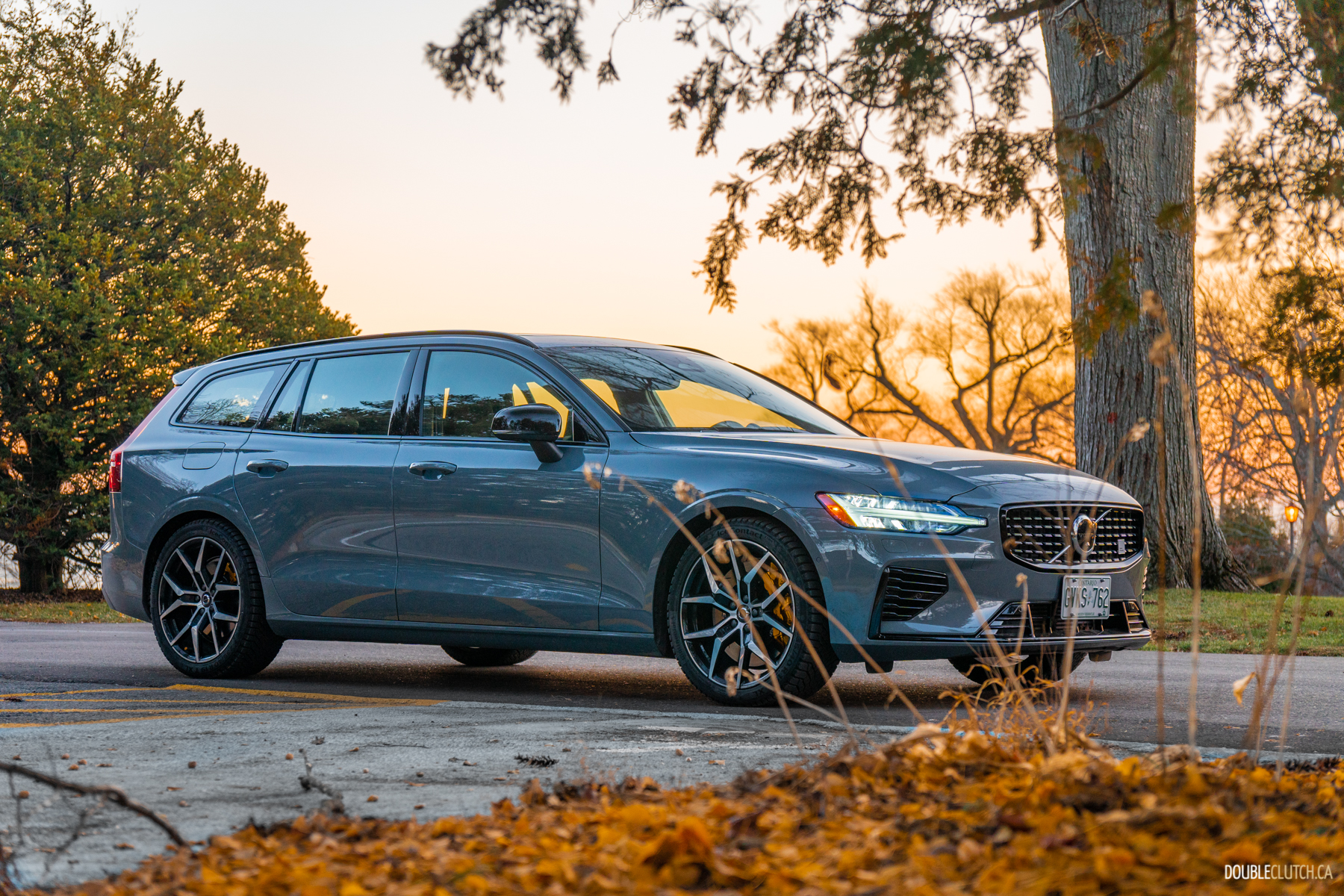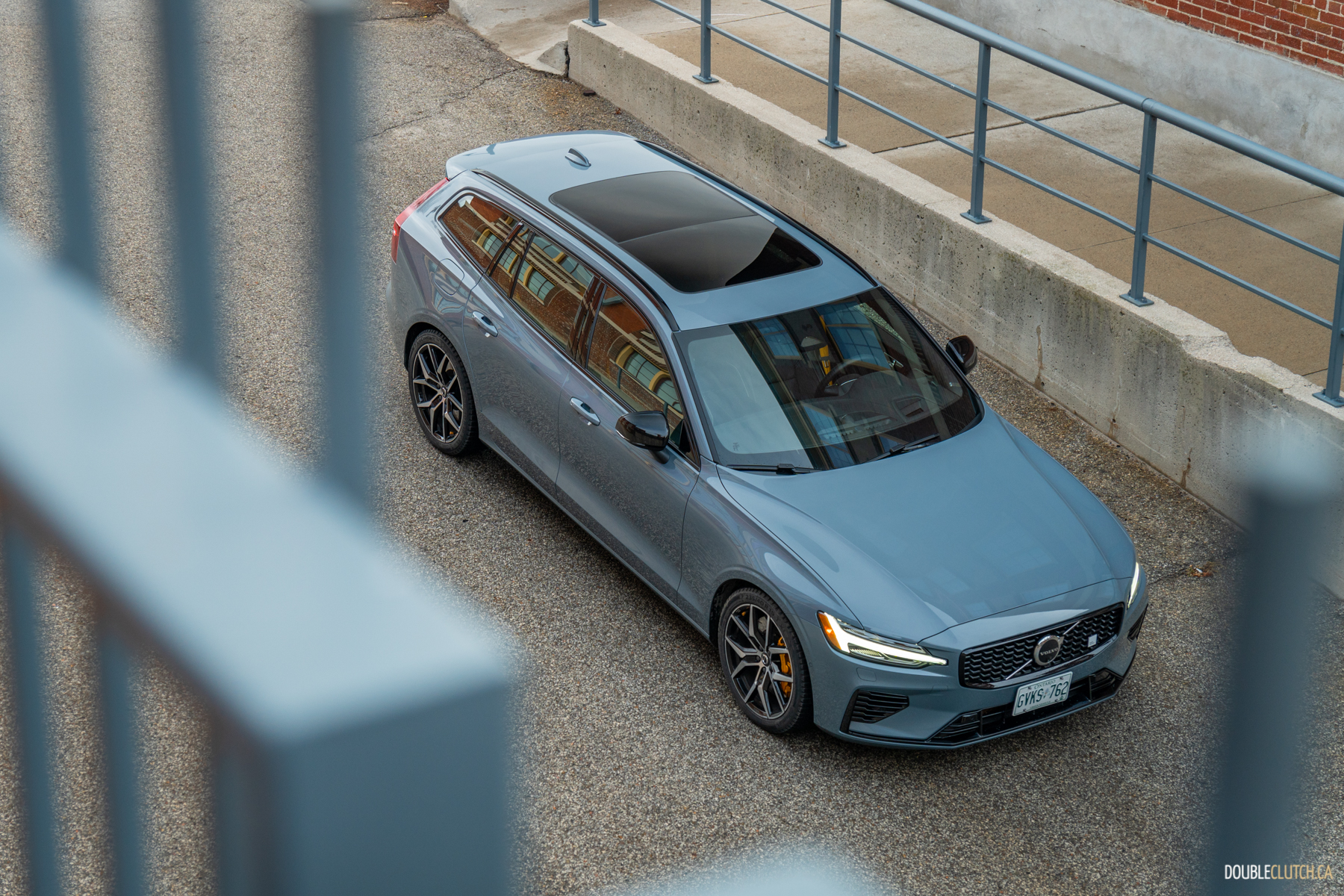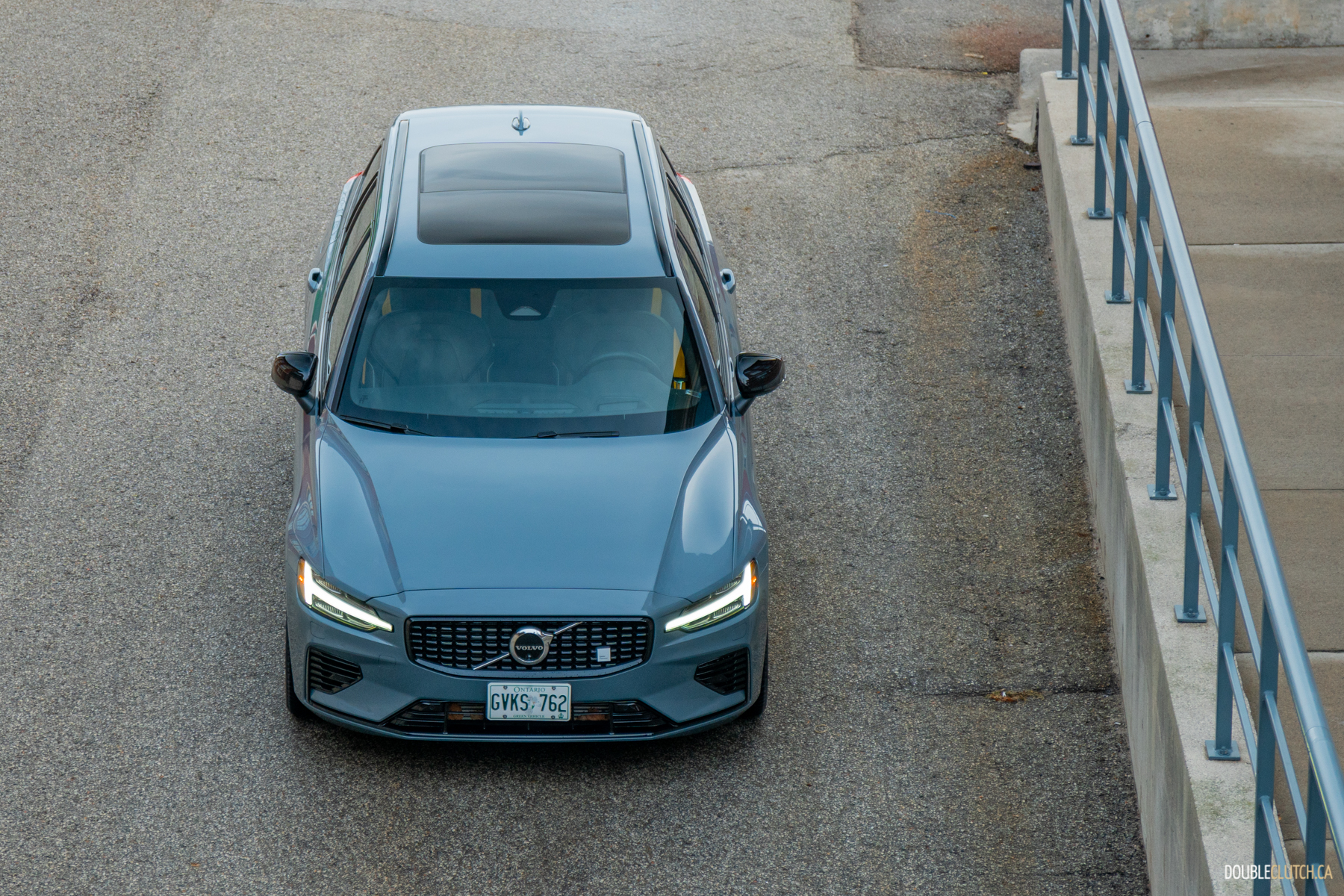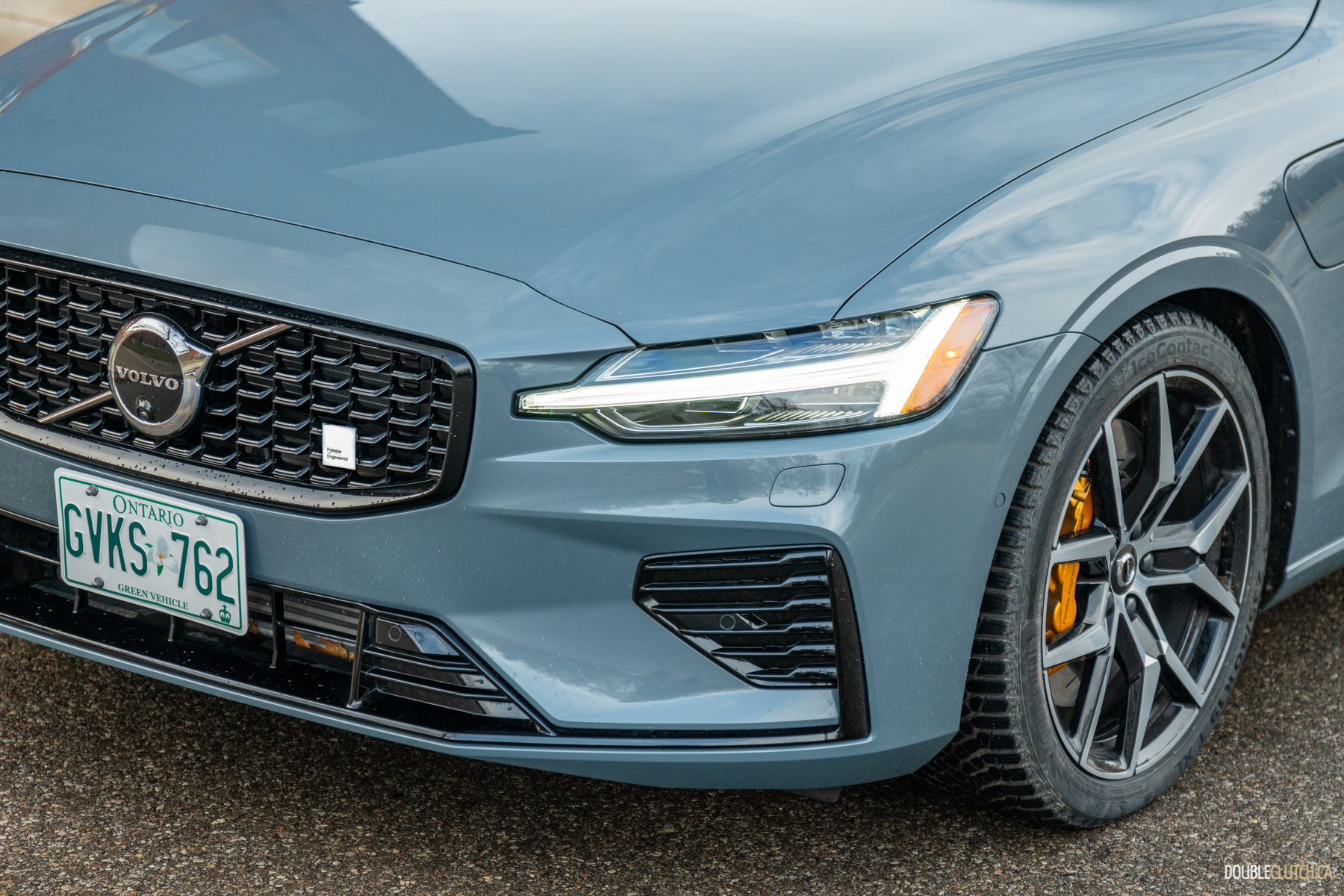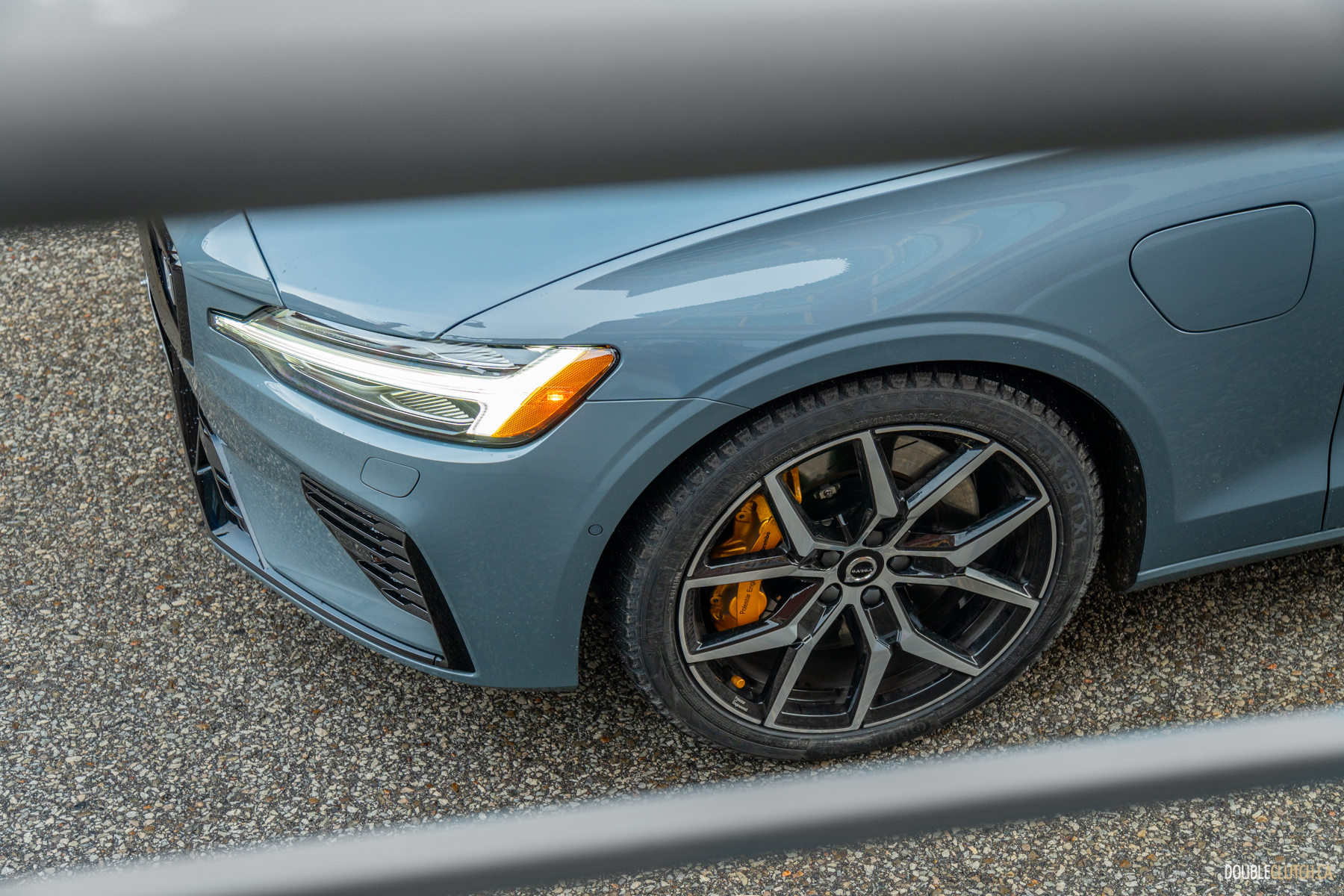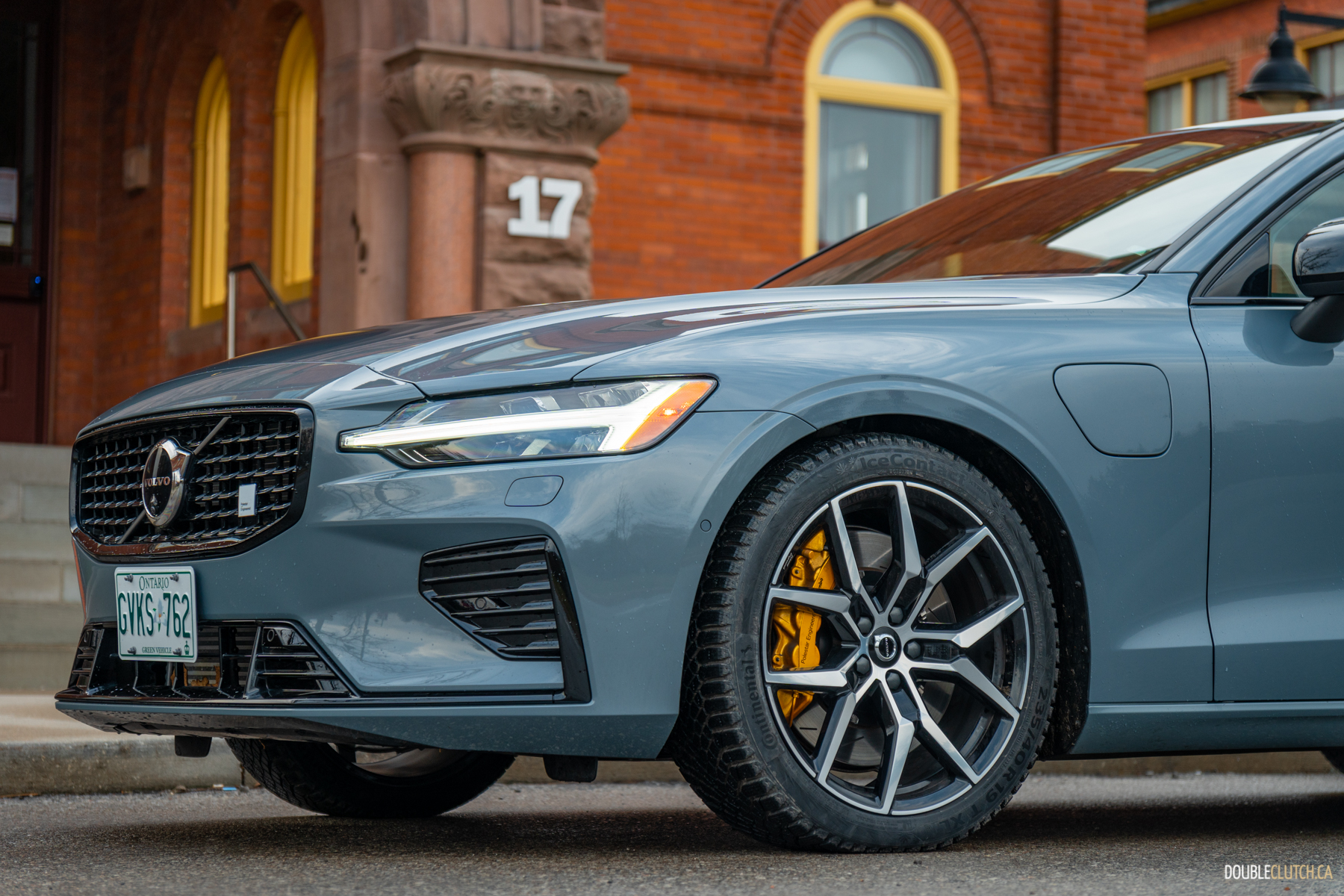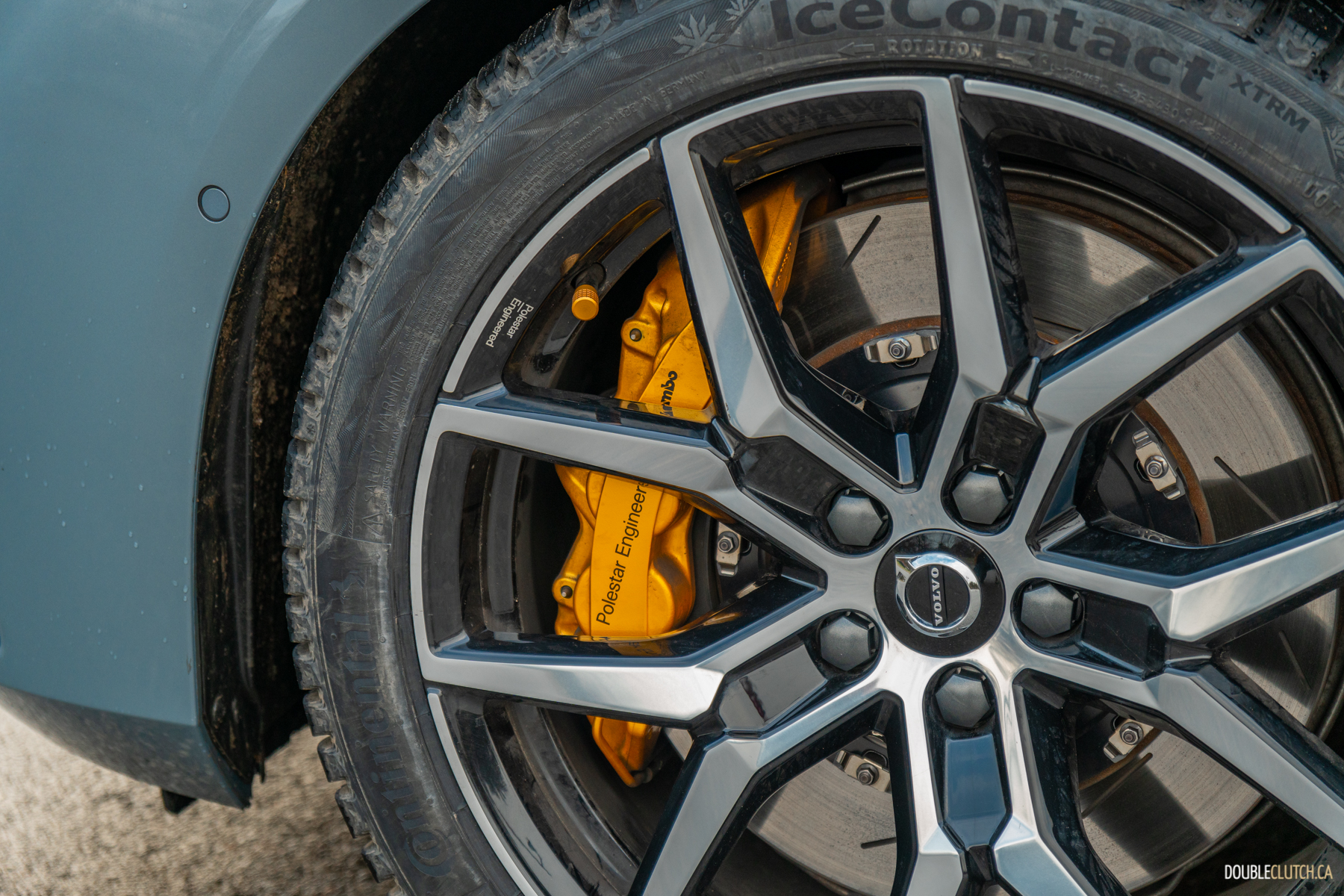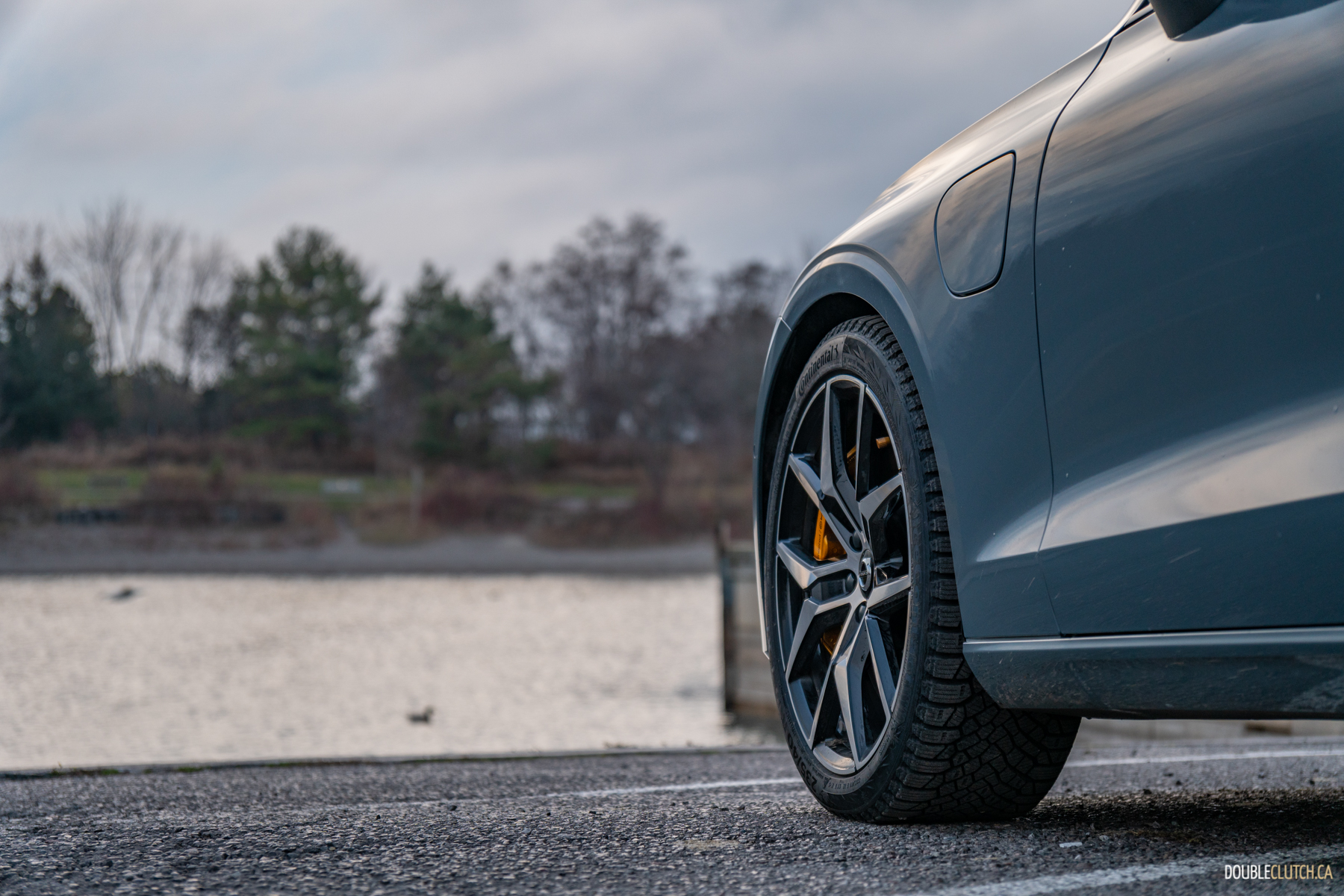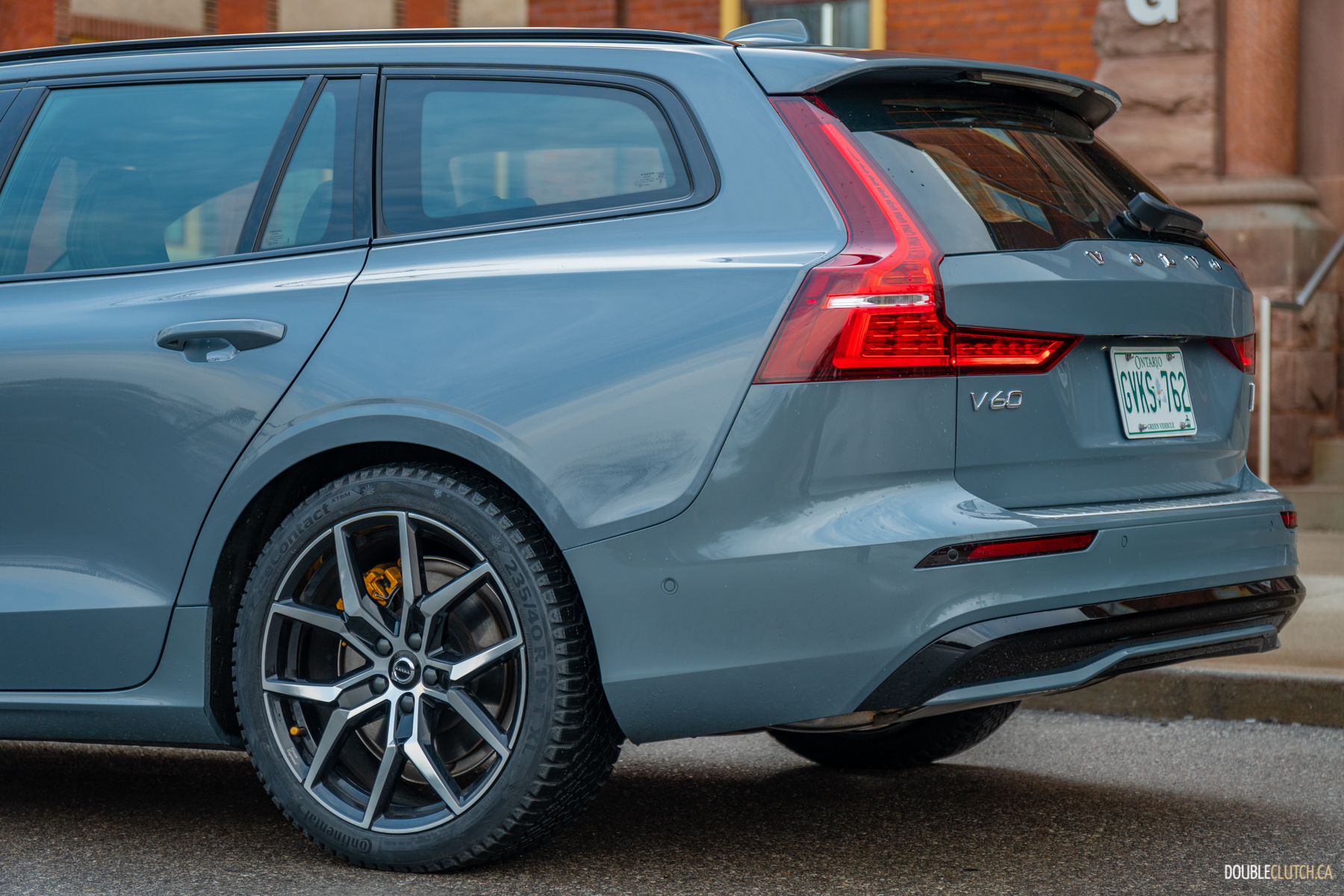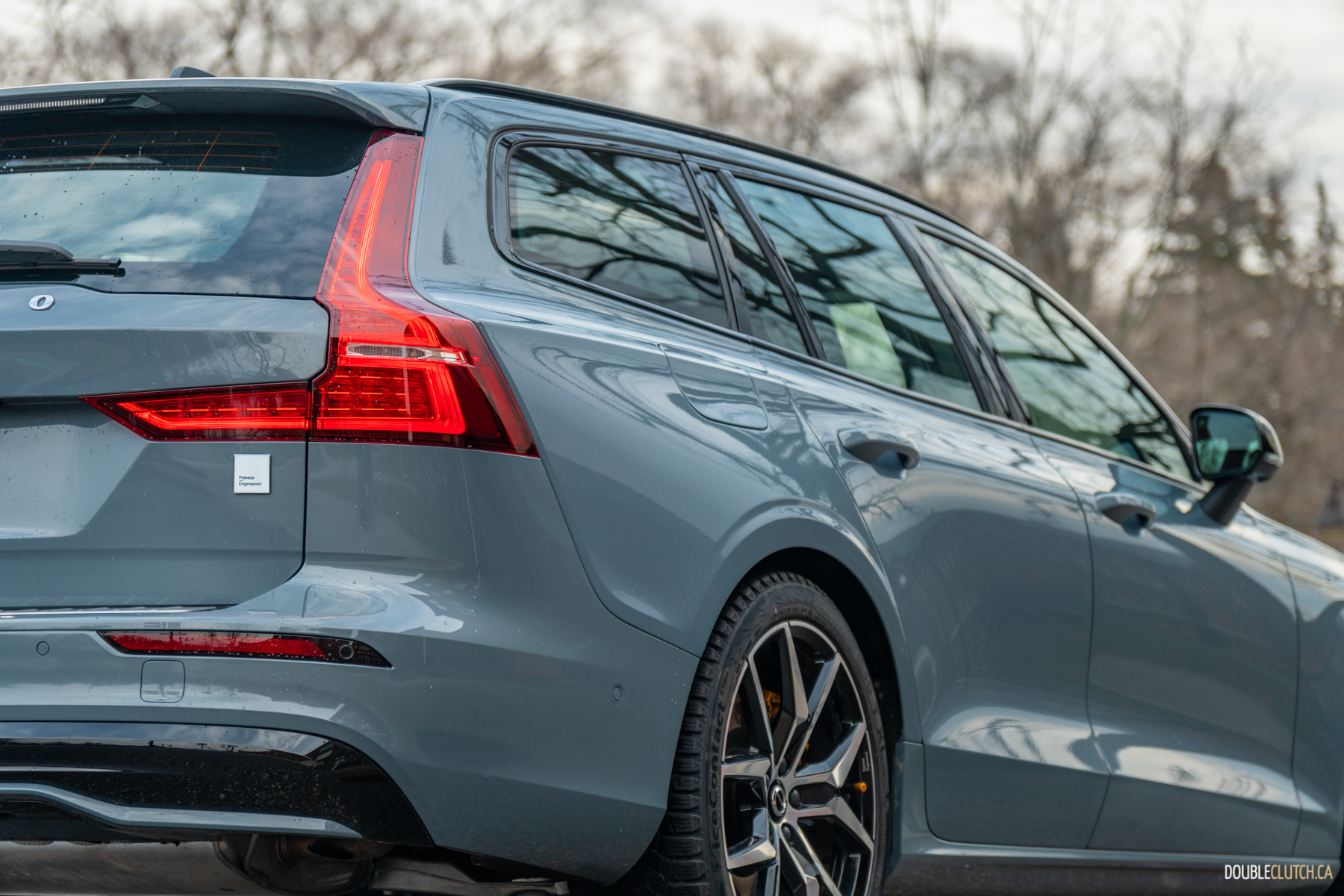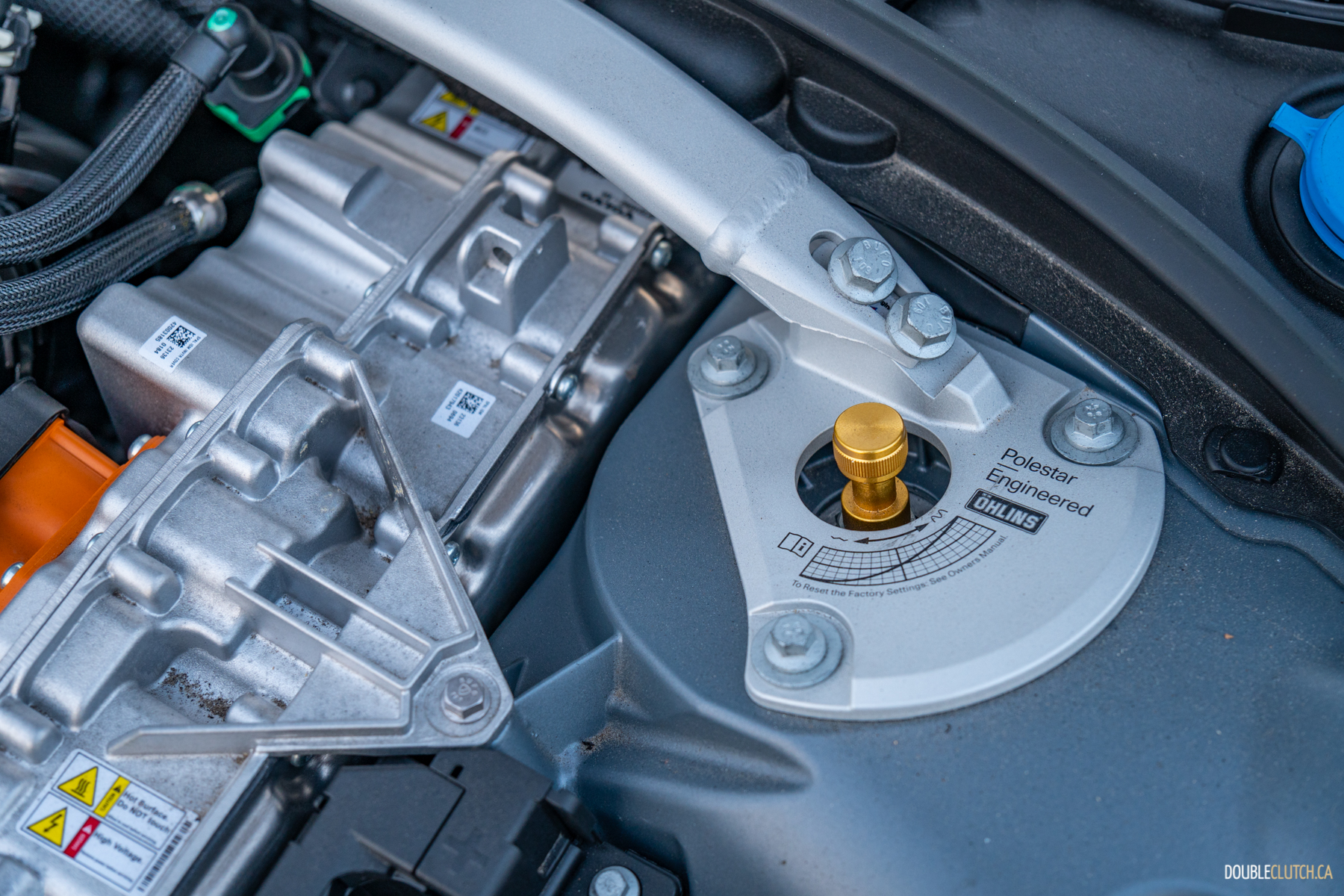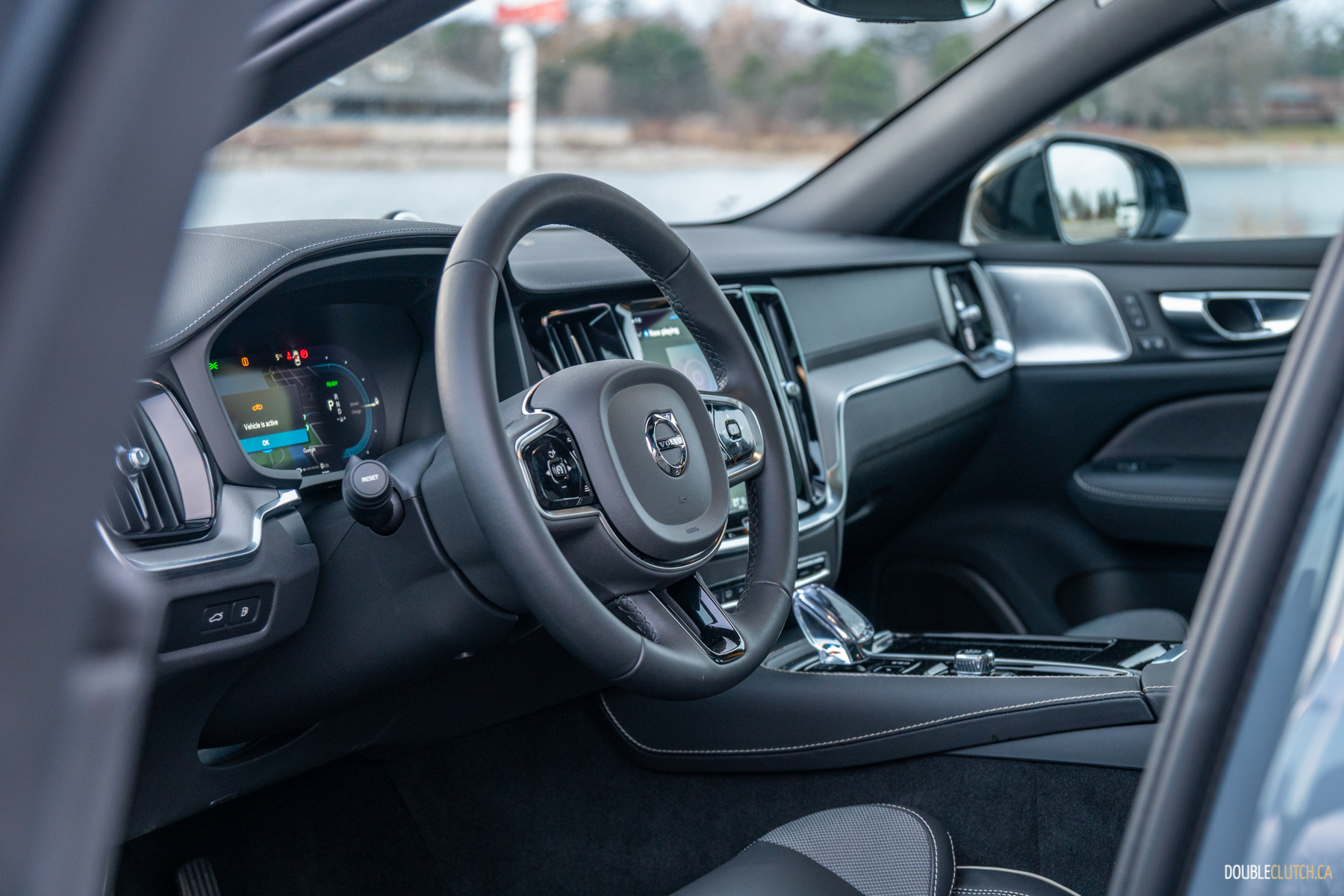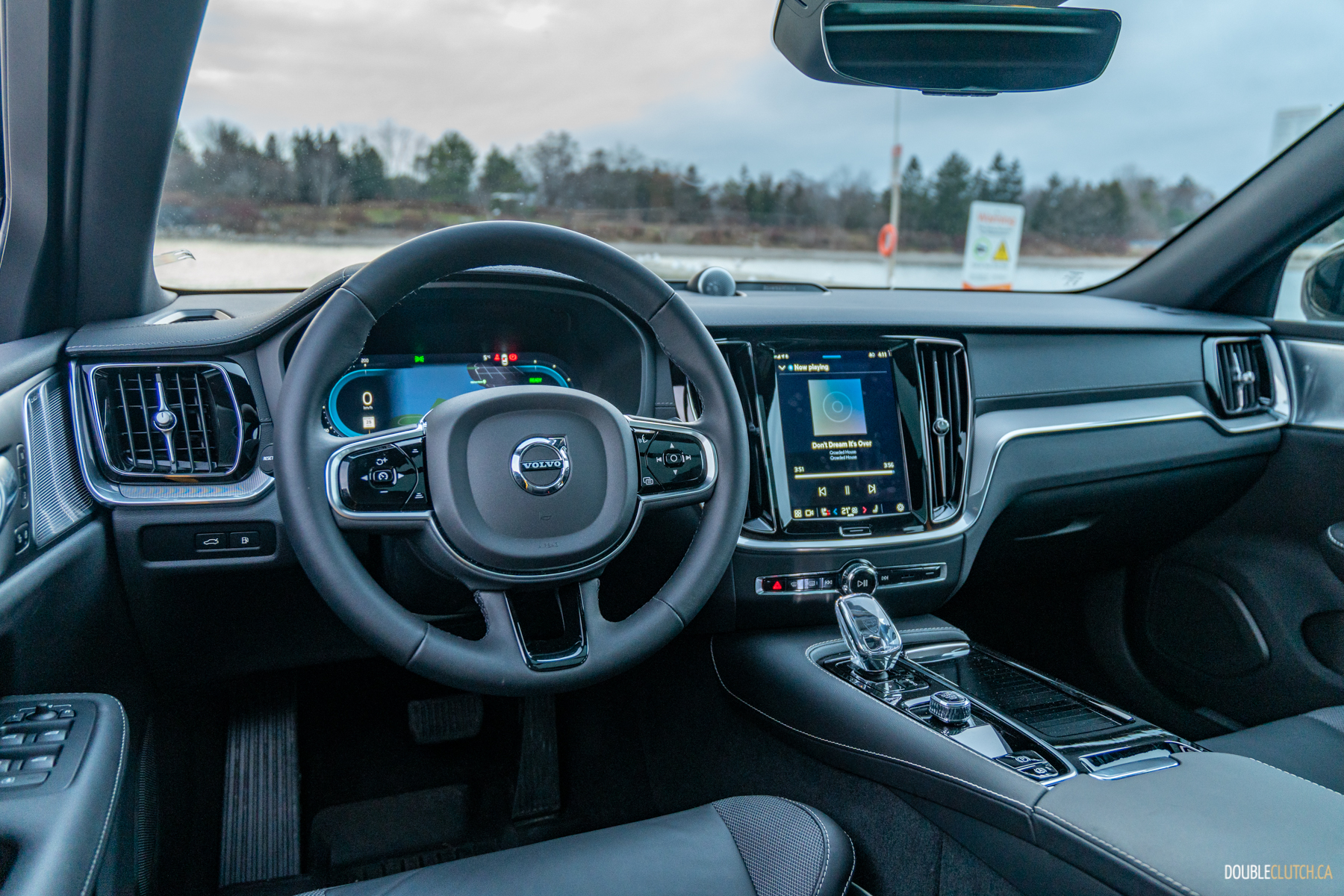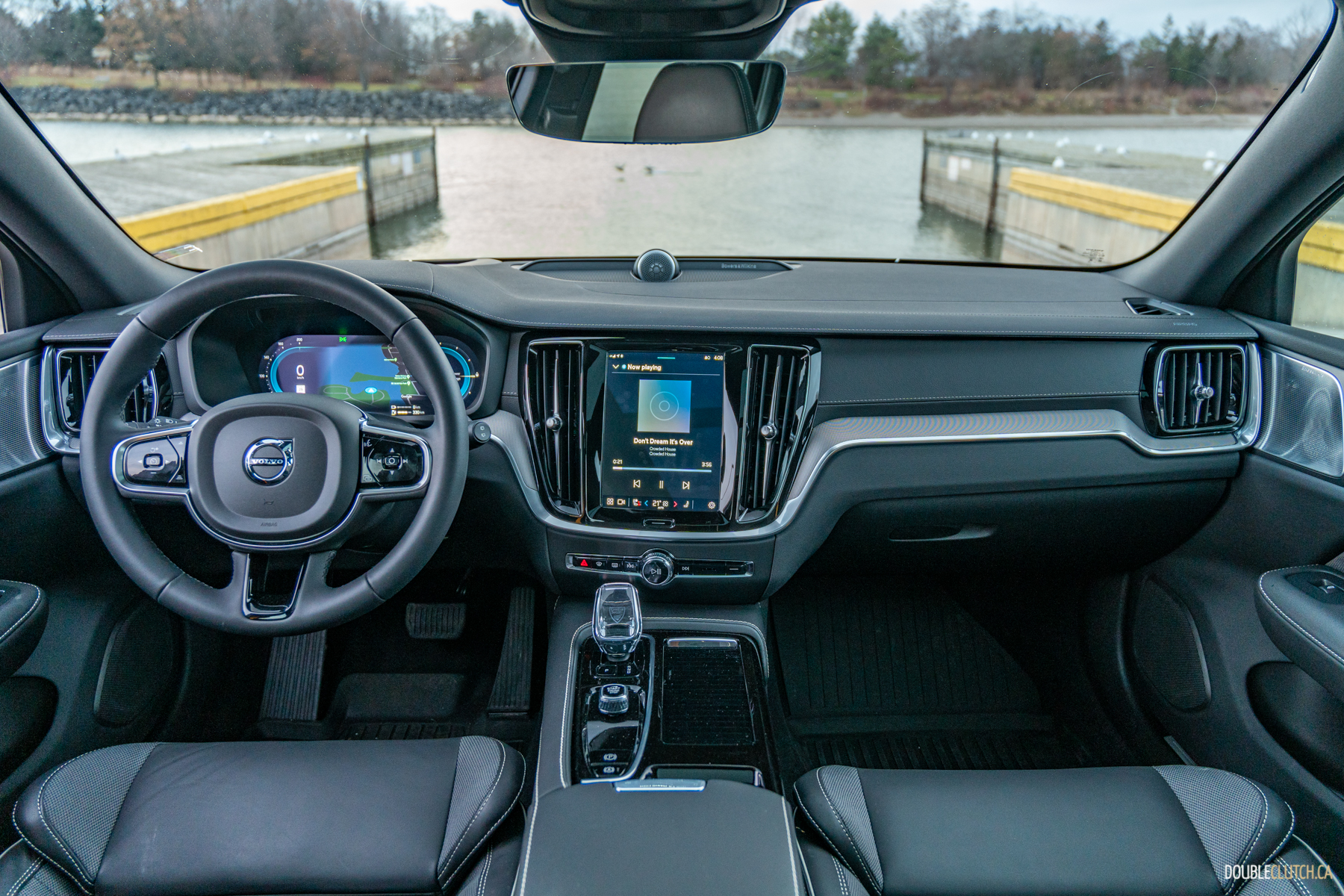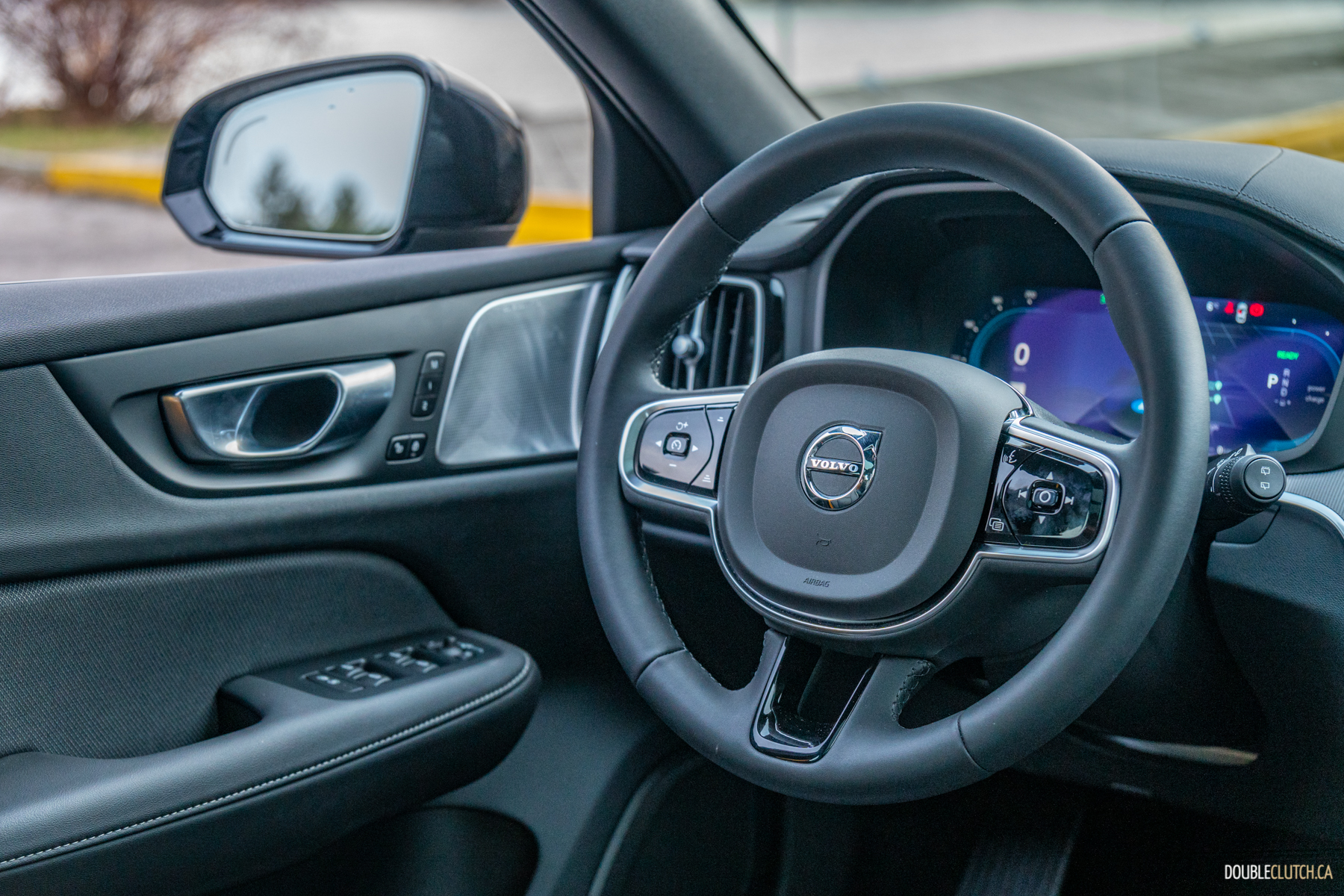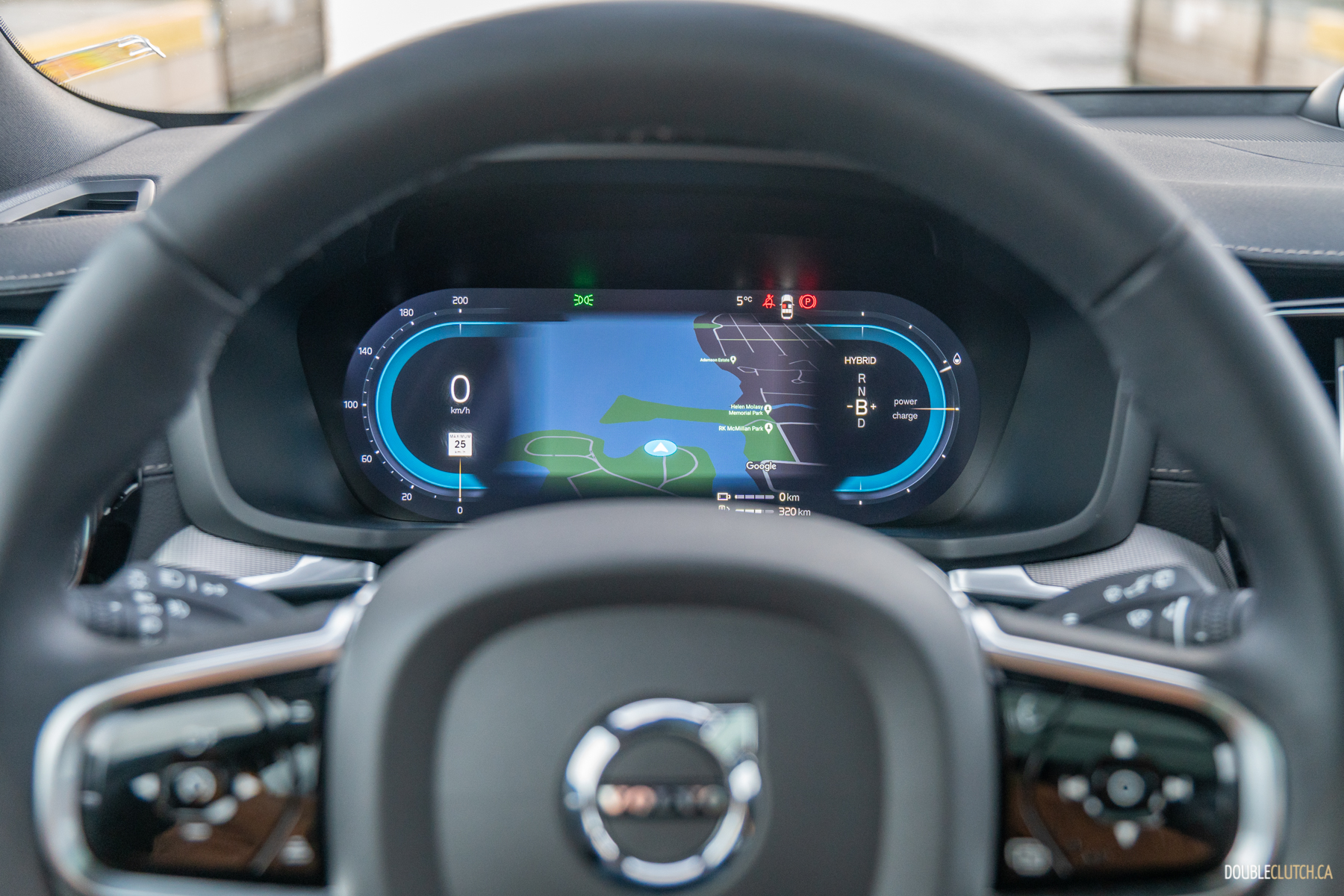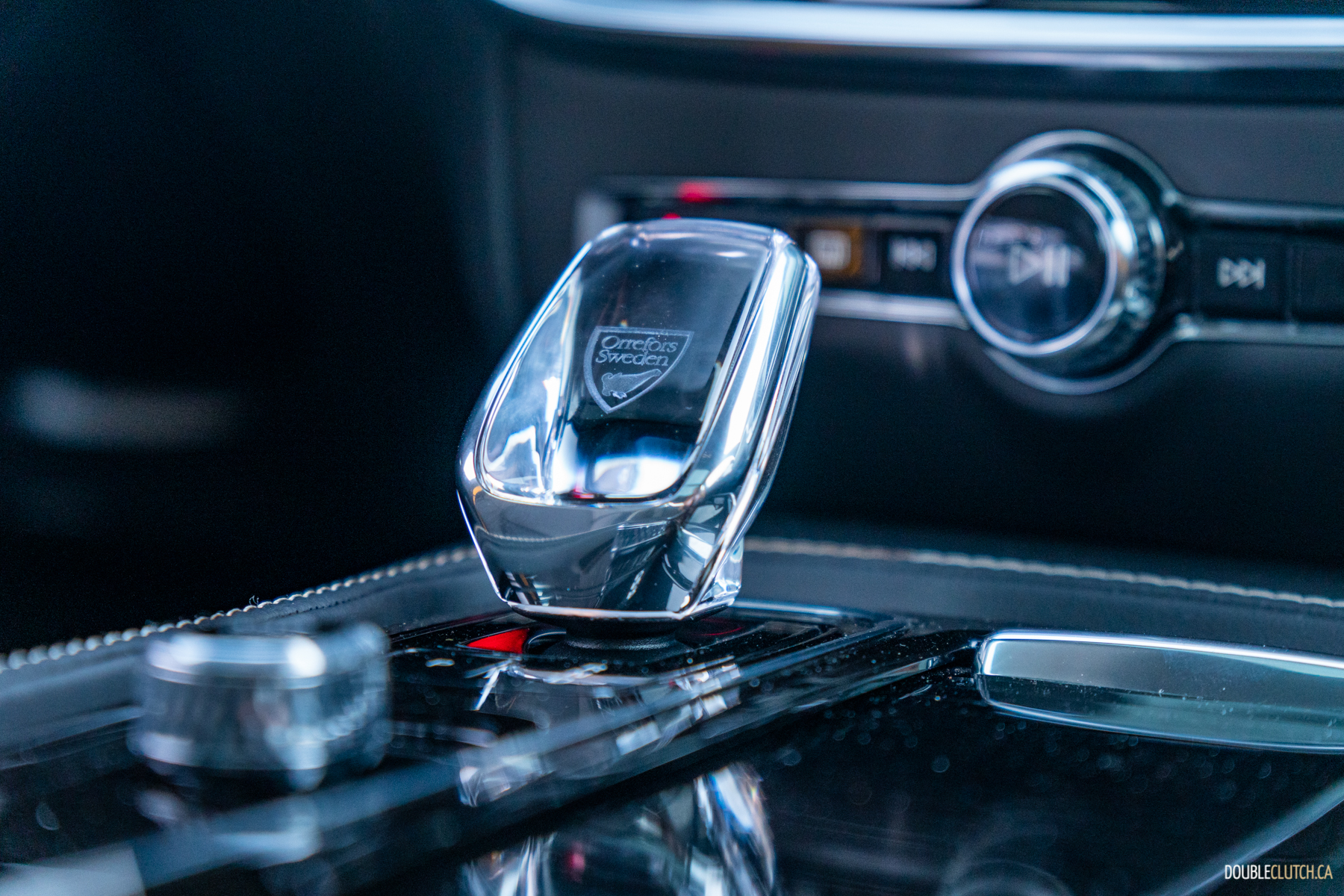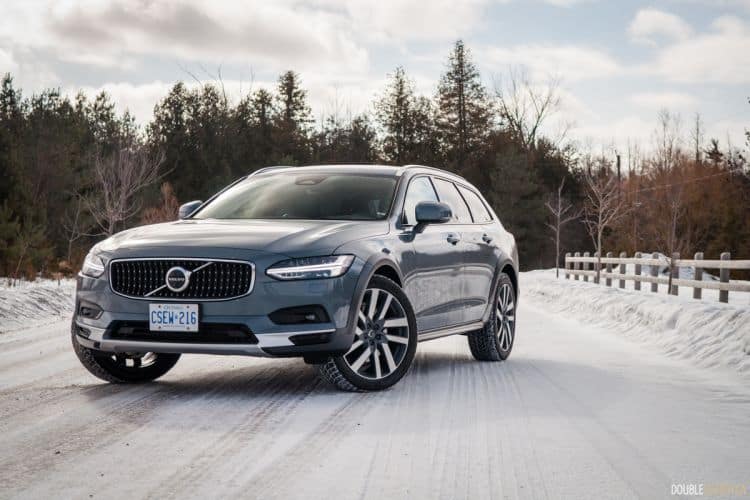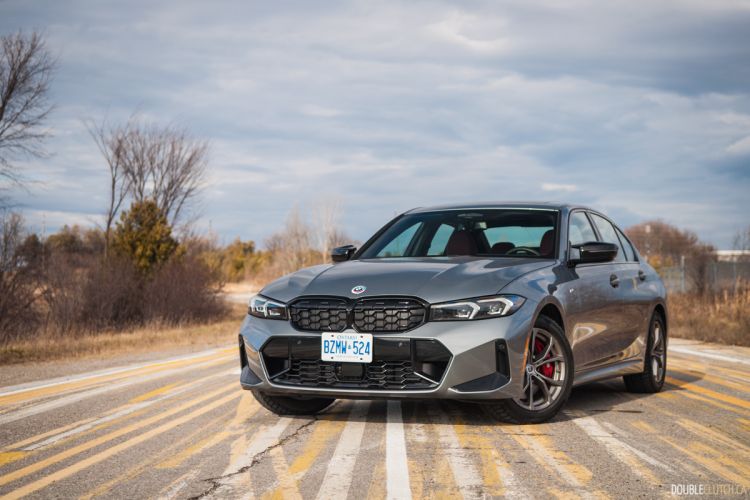You’d be hard pressed to find another car, at any price, that blends style and sensibility in the supremely satisfying way a Volvo does. They appeal to me on a very cerebral level, but the trouble with them, for me at least, is that they’ve always been a little too sensible. As much as I’ve always wanted to be a person that could love a Volvo, I need a car with a bit of an edge, in the vein of the Lexus IS 500, Chrysler 300C, BMW M340i and Cadillac CT4-V Blackwing. The 2024 Volvo V60 Polestar Engineered is the storied Swedish brand brandishing an edge, in the most suitably sensible way possible.
While it may look like there’s a lot carried over from prior Volvos — and there is — there’s a pile of tweaks here for 2024 that set this car apart and make it something special. First, the “regular” V60 is dead, in lieu of the armour-adorned and lifted V60 Cross Country. The Polestar Engineered model now stands alone as the only low-slung, clean-bodied V60 you can buy.
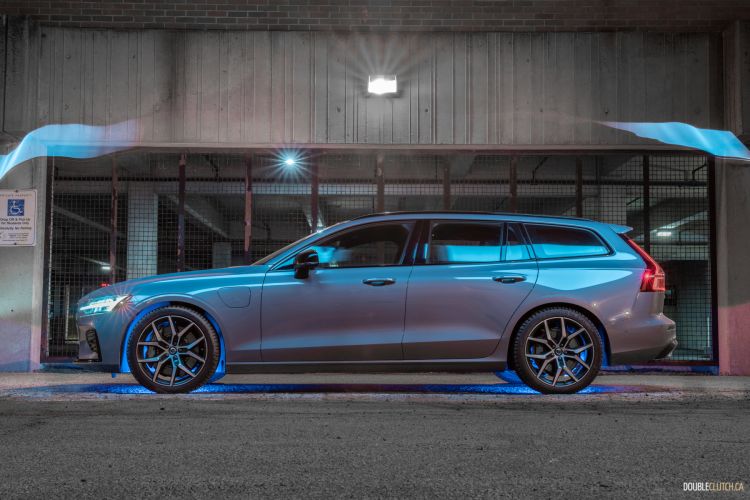
And what a body it is! The V60 is a great looking car in any configuration, but the Polestar, with its dropped ride height, bespoke 19-inch machined wheels, gold Brembo brakes, and subtle Polestar badging, looks absolutely fantastic. Every car looks way better when slightly lowered on kick-ass wheels, and this is no exception. With how subtle it is, most people wouldn’t be able to pinpoint why it’s so good-looking, but they would know that it just is.
The big story is under the skin, where the V60 Polestar has been blessed with the same brilliant powertrain that’s been deployed on the flagship S90 and XC90 T8 models. Gone is the convoluted twin-charged setup, replaced with a turbocharged 2.0-litre four-banger, augmented by a 48-volt plug-in hybrid system with a 14.9 kWh battery. The gas engine acts only on the front wheels and the electric system acts only on the rear, with no driveshaft to unite them. Combined output of the tandem powerplants is a hearty 455 horsepower and 523 pound-feet of torque.

It’s quick, with the electric motor on the rear axle offering instantaneous muscle while the gas engine gathers itself, able to sprint to highway speeds in four-and-a-half seconds. More impressive than the outright muscle is the way it’s delivered, as Volvo have achieved a mechanical sleight-of-hand that’s comfortably on the same level as anything from Mercedes or Lexus. Integrating gas and electric motors with regenerative braking and actual brakes is always tricky, plus Volvo has the added complication of having zero physical connection between these systems, and you’d never know it from behind the wheel.
Say you’re going down the highway, and you have the hybrid system set to “charge,” filling up the battery so you can glide on electric power when you get off the highway. If you then decide to stick it into “auto” or “pure” mode, whereupon it’ll kill the gas engine, it’ll do it almost totally imperceptibly. No need to adjust your foot, no change in momentum, or anything, save for the elimination of the very slight engine sensations.
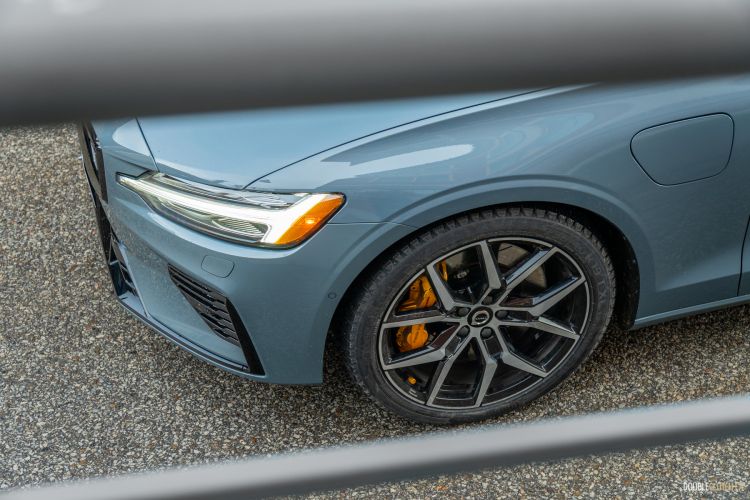
It’s tricky to calibrate an electric motor to feel normal in the sense that we’re used to. Volvo has done not only that, but managed to integrate that with the gas engine in a way that’s about as imperceptible as is mechanically possible. Said electric motor generates 147 hp and 223 lb-ft of twist on its own, so it’s now more than enough to propel the car on its own, even on the highway. On a full charge, the battery pack is good for a rated 60 kilometers without firing the gas engine, and I was able to get more than that out of it without really trying.
With all this powertrain tech on board and genius calibration of it, this Volvo pulls off the very rare trick of genuinely being the best of both worlds; a perfect marriage of brain and brawn, of soul and sensibility, without feeling like it has a split personality disorder. It can breeze past traffic in green-car express lanes, silently slip through city traffic using the one-pedal-driving I adore in EVs, and be an amazing back-road burner.
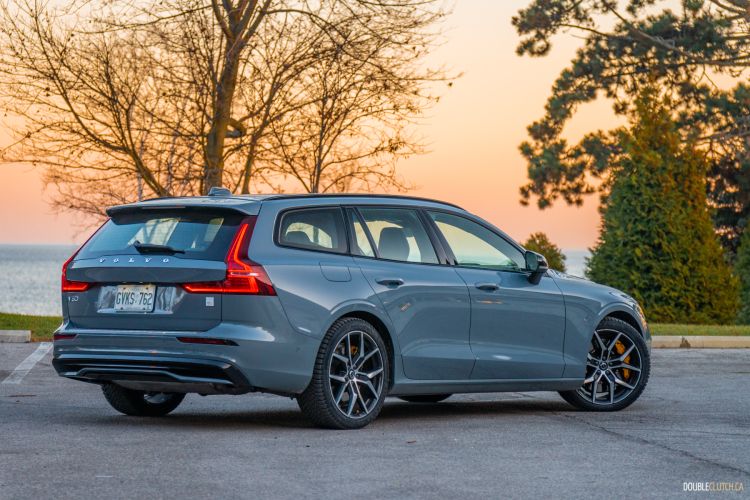
The Polestar brilliance doesn’t stop at the powertrain, as they’ve taken a fascinating approach with the chassis tuning. Most factory-fast cars feel like fast factory cars; they’re usually pretty good, but there’s almost always a little bit left on the table. This is left for the aftermarket to handle, for the few that really want to get a car dialed in for that last degree of sharpened edge. This Volvo feels like a properly tuned car. It’s incredibly tight, finely honed.
This is achieved through highly unconventional means that are definitely not for everybody. Rather than using active sway bars, four-wheel steering, air springs, or adaptive shock absorbers, this understated family wagon uses Ohlins dampers complete with the manual adjustment knobs you’d expect on an actual track weapon. These are paired with a matched set of lower, much firmer springs, stiffer chassis bushings, and a beefy strut tower reinforcement bar.
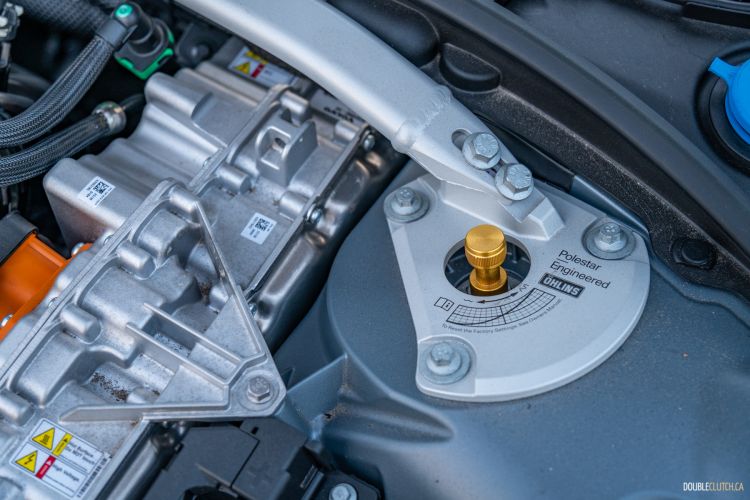
The result is a car that rides hard — probably too hard if you’re not accustomed to it — and it would definitely be too hard if it were on bigger rolling stock. I felt it was perfect; it instantly feels right. It’s refreshing to see a car that doesn’t resort to complexity to strike a compromise, this is just good ol’ fashioned chassis calibration, and it’s calibrated to be fun first. It just barely avoids being punishing, steamrolling over bumps with a decisive thump, immediately absorbing and dispelling body motion; this is the good kind of firm tuners strive for.
Volvo’s trademark organic steering feel really comes alive under this chassis, with therapeutic communication and feedback, aided by a talkative chassis with a front and rear end that talk to each other about as well as the car talks to you. It displays eager turn-in, terrific body control, and remarkable balance. It’s cohesive, lively, grippy, and refuses to understeer, and even has a faint inclination of rotation courtesy of the torquey rear axle.
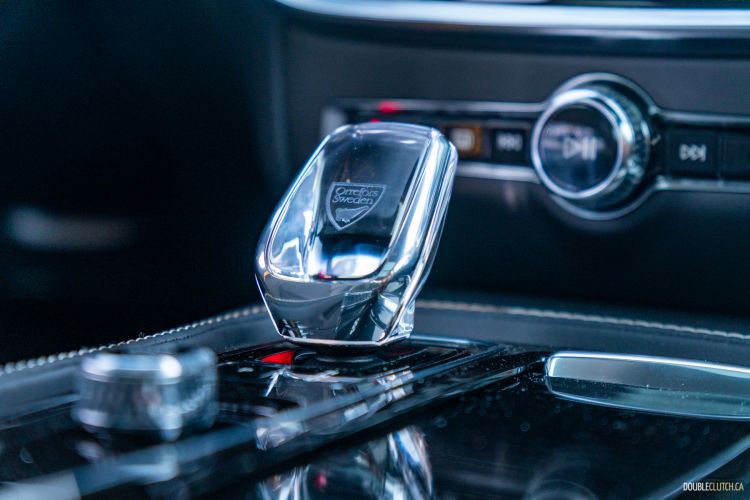
The Aisin eight-speed automatic disappears into the background, with some minor massaging by the Polestar team to ensure snappy shifts and smart logic when being driven enthusiastically, knowing when to hold and when to fold. It lacks the same level of engagement that some of its competitors enjoy, but also lacks the irritating obtrusiveness of some of those same competitors. On that note, the four-banger is set to be subtle, with a just-serious-enough mechanical tenor, erring away from the big drone and snap-crackle-pop theatrics most four-poppers are imbued with.
Six-piston Brembo brake calipers are in charge of halting the 4,500-pound heft of the Polestar; they are impeccable in feel and seemingly impervious to fade or fault. The only fault I can think of throughout the whole car is the Google-based infotainment, which isn’t bad by any means and works well enough once you’ve adapted to its idiosyncrasies, but you do need some time to make peace with it. This would be a faultless vehicle with Volvo’s previous Sensus infotainment system on board.
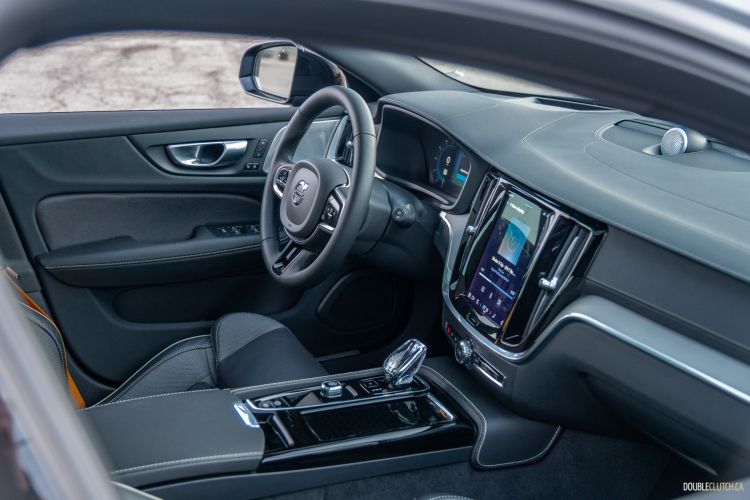
Otherwise, the cabin is a typically-Volvo wonderful place to be. Its design may have been around for a while now, but it persists as one of the most attractive interiors in the business through quietly captivating design. There’s nothing exuberant here, just cohesive use of quality materials and thoughtful juxtaposition of symmetry on the dashboard and asymmetry on the center console, which is garnished with an Orrefors crystal shifter for a little flourish of fancy.
The contoured Nappa leather seats with contrasting cloth inserts are supportive, cozy, and gorgeous. There’s an abundance of headroom and legroom for front and rear passengers, plus a cavernous cargo hold. This is comfortably the most commodious among its $78,000-ish sport sedan siblings. A robust suite of driver assists and safety features make sitting in traffic a breeze, and the peerless Bowers & Wilkins sound system makes it downright delightful.
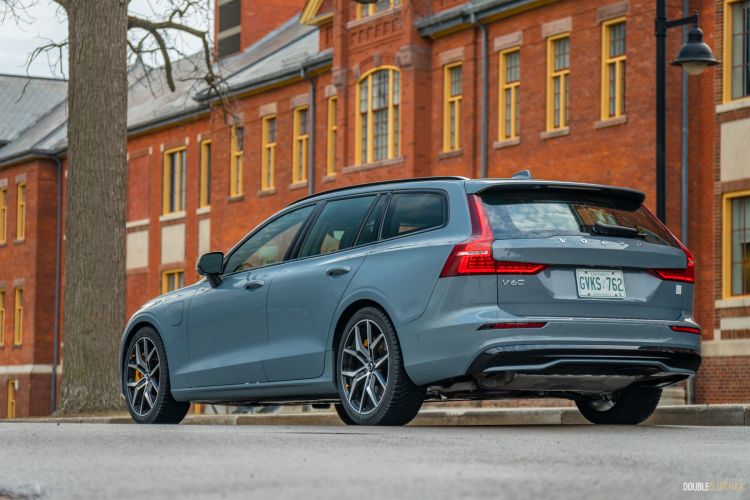
There’s the rub: at $78,320 as-tested, this stealth bomber Swede is right smack in the middle of all those incredible sports sedans I mentioned earlier. It absolutely deserves to be in that company, but they have bigger, louder engines, rear-drive platforms for sideways antics, and in some cases, a third pedal. They may be more outwardly soulful and perhaps more traditionally entertaining, but they’re not nearly as smart as this Volvo.
While those cars represent a fond look back at what sport sedans used to be, the 2024 Volvo V60 Polestar Engineered represents a compelling look at what they can be. This is progress done perfectly.


